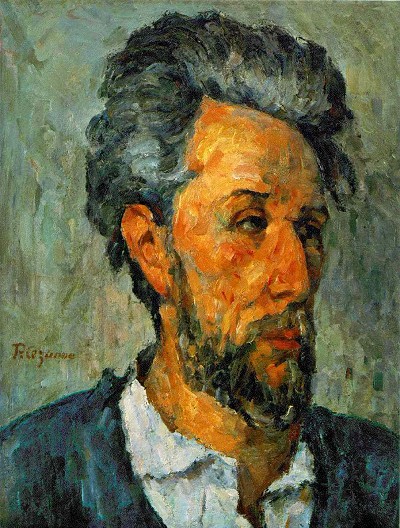
| Print | Back |  |
June 4, 2012 |
 |
Moments in Art Victor Choquet, Canny Collectorby Lawrence Jeppson |
The great Impressionist art movement might have perished at birth except for the faith of a French customs clerk.
An artist who dies of starvation or is driven to another line of work cannot create an art movement. A century and a third ago the Impressionist artists whose greatness we now universally acclaim were at the point of premature extinction.
One man who saved them was Victor Choquet (1821-91). He was a collector of extremely modest means, but art was a passion. His every penny went into art. If he had a choice between buying a painting or a new overcoat (or even a meal), the painting always won.

Choquet got off to a bad start early in his career by showing up at an important official function in a threadbare suit. It was typical of him. He was a minor official in the Paris customs office. He could have risen to a better job by leaving Paris, but he could not forsake the excitement of galleries, art shows, and Seine River bookstalls.
Although Choquet had no formal art training, he had remarkable inborn taste. Truman Madsen says everyone is a genius in something. Choquet's genius was an eye for art that would become important. Everything he bought stood the test of time.
He began by collecting Eugène Delacroix (1798-1863), the giant of French Romanticism. Ultimately he acquired 89 works by Delacroix, including nearly two dozen oil paintings. Choquet befriended Claude Monet (1840-1926), Auguste Renoir (1841-1919), and Paul Cézanne (1839-1906). Choquet's Delacroix collection was so impressive that when Cézanne saw it he was moved to tears.
The first exhibit held by the Impressionists was a terrifying fiasco. But the artists needed money. So they dared next to put their works up at public auction in the Hotel Drouot, March 24, 1875. The hall was jammed with jeering people. Prices? Well, Berthe Morisot (1841-1895) sold best, at the equivalent of $50 a canvas. Monet sold for $35, and a Sisley (1839-1899) actually went for $1.00.
Incensed, Choquet argued with the crowd but was beaten down. Finally he purchased a Monet for $20 and escaped. During the next few years, Choquet's purchases often stood between bread and starvation for some of the artists, particularly Monet.
Soon after the catastrophic auction, Renoir and Cezanne painted Choquet portraits. Choquet probably paid them pittances, but it was the best he could do. The Renoir portrait shows that the collector was not a rich man. His beige coat is edged in dark brown piping, his band-collared shirt unbuttoned at the neck. His head is narrow, an illusion heightened by a tremendous crop of graying, combed-straight-back hair. His moustache is light, his beard darker. The fingers on his clasped hands are long and sensuous. The portrait, oil on canvas, belongs to the Fogg Museum, Harvard.
Renoir painted Choquet's wife. Although the date for both portraits is supposedly the same, I am inclined to question the 1875 dating. The wife's portrait is more dramatically Impressionistic and has been called a masterpiece. It belongs to the Staats Gallerie, Stutgart.
The same year Cezanne also painted Choquet, in a portrait that is now in the Rotschild Collection, Cambridge, England. An 1877 Cezanne portrait shows Choquet sitting sideways in an arm chair. It belongs to the Gallery of Fine Arts, Columbus, Ohio.
These portraits done so early in the blossoming of Impressionism demonstrate how important the customs officer was to the survival of the artists.
When Choquet died, his collection included many Monets, 20 Renoirs, 30 Cézannes. But perhaps more important than the purchases be began making a quarter of a century earlier was the fact that Choquet's faith and understanding gave the artists courage.
| Copyright © 2024 by Lawrence Jeppson | Printed from NauvooTimes.com |